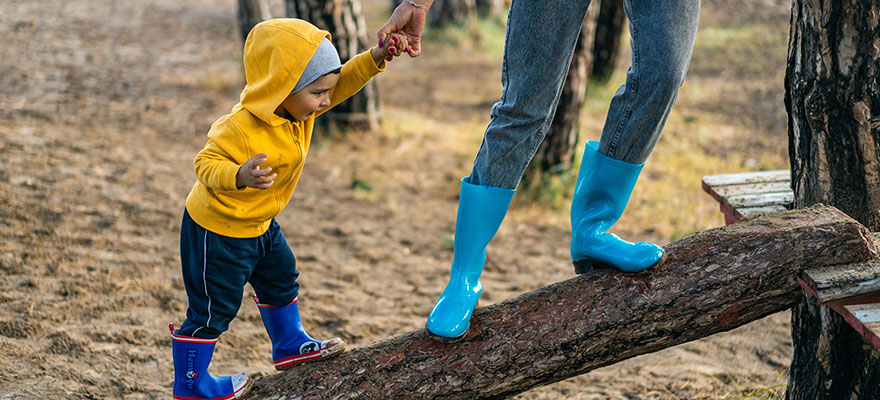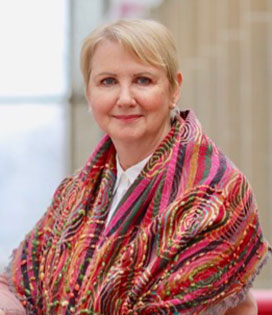Promoting social inclusion and equity for children and youth with disabilities

By Todd Devlin
It’s still true today, Gail Teachman says, that most of the focus in children’s rehabilitation tends to be on addressing impairment in an effort to help kids with disabilities be as ‘normal’ as possible.
But what is ‘normal’? And should the focus be on ‘fixing’ something that isn't ‘broken’? The research shows that, though well-intentioned, rehabilitation in this form can actually be detrimental to a child with disabilities.
“This is one of the key findings in most of my projects,” says Teachman, an assistant professor in Western University’s School of Occupational Therapy. “Some ways of practicing can actually be quite harmful for children, especially as they become older and begin to see the kinds of social stigma and difficulties faced by individuals who are different.”

Gail Teachman, School of Occupational Therapy
This notion extends far beyond the healthcare setting, of course. Societally, the research shows, disability is often seen as tragic, a sad fate for an individual to bear. Or, perhaps worst of all, the source of burden for others.
Teachman’s work takes an entirely different view.
“What would happen if we changed some of these values so there’s more room for somebody to be different – not the ‘perfect, ideal citizen’ that our neoliberal (society) puts up as the one ‘right’ way to be?” said Teachman. “Wouldn’t it be better if we thought of ways to address impairment, but at the same time be a force, socially, to reduce stigma and promote what we call positive disability identities?”
The answer, according to Teachman’s research, is a resounding yes. And those findings come directly from the very population impacted – children with disabilities themselves.
Thinking again about the rehabilitation setting, a recent study conducted by Teachman and her team involved learning directly from individuals about their experiences in children’s rehab. The participants included individuals living with cerebral palsy, spina bifida and blindness, as well as individuals with an acquired brain injury.
“They told us that some of the things that happened to them, despite the fact they were almost always well-intended, made them feel like they were just a project to be worked on, or that they almost felt disembodied, like they were up on the ceiling watching the things other people did to them,” she said.
“Wouldn’t it be better if we thought of ways to address impairment, but at the same time be a force, socially, to reduce stigma and promote what we call positive disability identities?”
In other words, they weren’t an integral part of the experience, sharing with healthcare professionals their thoughts, feelings and preferences. They weren’t given agency in the process, and they were largely left out of the discussion about their own healthcare and their own bodies. The same is experienced beyond the healthcare setting – in schooling, employment, and beyond. Teachman believes the reasons are two-fold.
“Children in our society haven’t really been talked to directly,” she said. “They’ve been felt to be incompetent and unable to share anything valuable about their own experiences. And then there are a lot of assumptions that ‘the professionals know best,’” which leads to parents, wanting the best for their children, feeling pressure to honour the ‘experts’.
Teachman challenges these assumptions and pressures. She’s been doing so – both clinically and in a research context – for more than three decades. Before she joined Western’s Faculty of Health Sciences in 2018, she’d spent 24 years as an occupational therapist at Holland Bloorview Kids Rehabilitation Hospital in Toronto.
Through her research, Teachman promotes “social inclusion and equity for children and youth with disabilities” – in all areas of life. The name of her lab, Childhood Rehabilitation Ethics and Disability (CRED) encapsulates well her program of research.
“My work is really focused on getting at those assumptions and challenging us all to try and think a bit differently,” said Teachman, whose work takes a critical perspective. “It’s not about throwing out all the good things, but rather focusing on how we might make some shifts that could honour a more positive disability identity – and the knowledge we have from disability scholars.”
The term disability itself is one to be challenged. Is an individual who is blind disabled? Or is their blindness an impairment? What is the proper term – an autistic person or a person with autism? Sometimes, person-first language is preferred. Sometimes, it’s not. It depends on the community or the individual.
Teachman says that an individual’s impairment is just that – an impairment, and not a disability. Disability, rather, is the “experience or phenomena that gets produced out in the social world.” Some groups, including many disability activists, prefer to use terms such as ‘disabled child’ or ‘disabled person’ to signal that disability is produced at the level of society and is not a ‘deficit’ located within individuals.
“In the Deaf community, for example, people have pushed back to say, ‘No, this isn’t a difference that needs fixing. We’re fine the way we are. We can develop our own Deaf culture,’” said Teachman.
“But these are ongoing debates. I’m not suggesting there’s one right answer, and I think that’s another clear message in my research,” she said. “Some people prefer to say, ‘I’m a disabled person.’ With autism, some people like to say, ‘I’m autistic. It’s part of my identity. It’s who I am, I don’t want to change it.’”
The key takeaway? Teachman says it’s about asking what the individual wants – not just around terminology, but about everything involving inclusion and equity. It’s about honouring the preference of the person in front of her, she says.
“What are their priorities? What are the things that are important to them, and what are the things that have been problematic or harmful to them?” she says. “We can learn more from people who get labeled and who experience disability, and we need to be much more tuned in to their views and preferences.”

